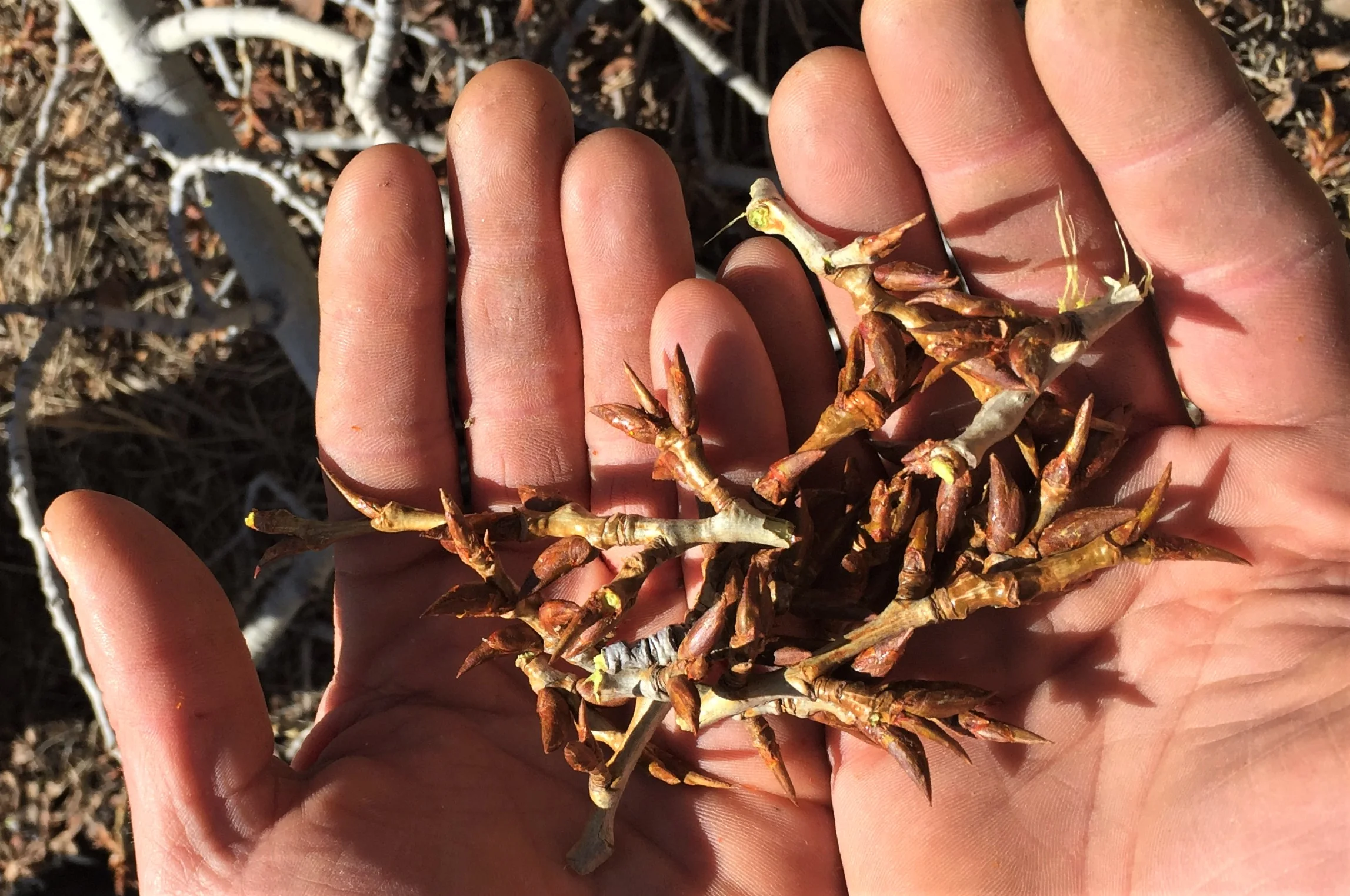I gathered basketfuls of sticky Cottonwood Buds on a series of late winter forays on crisp, cold, sunny mornings when the sap had started to rise and the buds had begun to swell. Follow me on this journey...
Foraging a Frozen Land
What so great about Cottonwood Buds?
White Willow Bark and Cottonwood buds are rich in naturally occurring beta hydroxy acid called Salicin. This chemical, when consumed, is converted into a complex biological process inside the body where it functions as a pain reliever and anti-inflammatory and improves circulation. When it was first discovered, researchers thought it might be a vitamin and referred to it as Vitamin S. Salicylic acid can be synthesized in the lab and is available in this form to use in the food, skincare, and medical industries. White Willow bark extract and the bark itself are also readily available.
Salicylic Acid is a very common skincare ingredient, many people swear by it's ability to address a variety of skin issues. A skincare product, it breaks down fatty compounds like oily sebum, grease, sunscreen, and makeup, reducing the accumulation of debris and dead skin cells, which can clog pores and cause outbreaks. Salicylic acid exfoliates skin by removing dead skin cells more easily in order to expose a healthy new layer of skin, stimulating skin cell turnover and the excretion of dirt and oil from pores and hair follicles.
The same exfoliating action that reduces clogged pores also helps smooth the look of fine lines and wrinkles. A 2010 skincare study reported that Salicylic acid can help reduce the appearance of skin aging. Results showed improvements in the appearance of wrinkles, pore size, and radiance and gave skin a clearer, healthier appearance overall in just one week.
Now, let’s take a closer look at the precursor to Salicylic Acid – Salicin.
It is important to remember that Salicin must be converted inside the body into Salicylic Acid. The scientific community questions how effective Salicin is as an exfoliator in and of itself, and more research is needed.
However, Salicin does indeed benefit the skin. In topical application, it appears to retain its aspirin-like composition, helping reduce redness and calm inflammation.
If you are interested in natural skincare, you are probably familiar with White Willow Bark. White Willow Bark is part of the Salix family of plants, which all contain Salicin in their leaves, bark, and buds. All varieties of willow contain varying amounts, with White Willow being one of the highest. White Willow bark is the most common Salicin source found in natural skincare formulas and the source most widely available to herbalists, but it is not the only one. And this is where Cottonwood Buds fit in.
Here is where Cottonwood buds come in...
Cottonwood buds are also a rich source of Salicin. But unless you happen to live in the middle of a Cottonwood forest like I do, it is almost impossible to source. Dried buds are just not as desirable, but they are available from herbal suppliers. Sometimes, you will find fresh cottonwood buds for sale on Etsy. But since the very best time to start your infusion is immediately upon harvest, buds picked and then shipped won't be as potent as those placed immediately into oil for extraction.
FOUND IN MY FAVORITE CLEANSING OIL: FRESH COTTONWOOD BUD INFUSED CLEANSING OIL BLEND
Cottonwood buds exude a yellowish-orange volatile oil referred to as balsamic resin. This resin is rich in Salicin, as well as a host of other beneficial compounds such as other phenolic compounds, flavonoids, and tannins, powerful antioxidants that help protect skin from environmental stress and pollution when extracted in oil to prepare salves and other topical applications. So we look beyond the benefits of just the Salicin to all of the compounds found in the sticky buds, which have properties that act in synergy to provide benefits for our skin.
PEER REVIEW RESEARCH:
